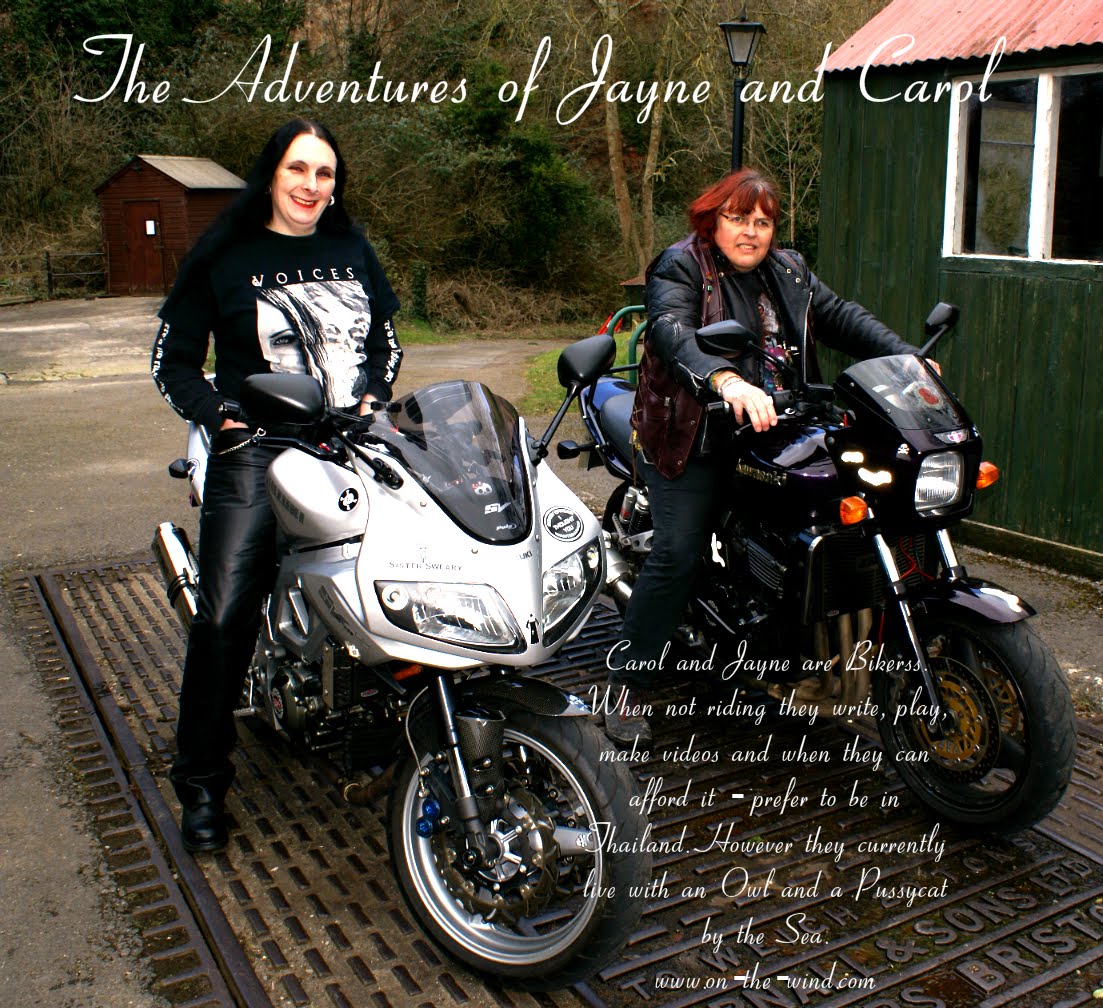Wednesday 30 December 2015
Sunday 13 December 2015
Bikers and Pedestrian Riders in Thailand
With a W.H.O reported number of of over 17000 000 motorcycles, fifteen times the amount you will find on UK roads where there is a similar population. These can be split into two main categories - 'Big Bike' Riders and the majority who see motorcycles as a tool to help them get about.
The 'Big Bike' riders tend to have invested money in their machines and also often the kit to match. They predominantly wear safety clothing and helmets and many consider their own safety. Ok like their counterparts around the world some will always been exploring speed. But most being mature riders with years of riding experience behind them. There was a paper that even suggested Thai riders were marginally better than Los Angeles Riders in Collision Avoidance - Rider Training and Collision Avoidance in Thailand and Los Angeles Motorcycle Crashes although it was also suggested that neither fared very well. Thai Riders tend to have seen death on Thai Roads many times which has a sobering way of installing respect. There are many Bike Clubs all over Thailand, again like other bike clubs around the world, many do Charity work. I have friends on Koh Samui who as an example, are members of the Sa-mu-i a bike club who's main aim is to help support schools and communities in deprived areas. I suggest that maybe one way to improve road safety in Thailand is for the 'Big Bike' riders to share their kills and experience with younger bikers.
By far the majority of 'motorcycles' in Thailand are scooters, typically motorcycles of up to 200cc with a 'step through' design. The 'class' used to be dominated by the Honda range of semi-automatics, but now there are floods of automatic scooters everywhere.
The scooters are utilized all over Thailand for all sorts of tasks, from mobile food stalls and delivery vehicles, to Taxi's like the one in the picture above. The legal age for riding a bike up to 110cc bikes is 15, however as the bikes are common family transport often riders start much younger.
As these bikes are so common they are used in a manner more associated with bicycles in other countries. Often riders choose to not wear helmets or safety gear. They also tend to ride like some cyclists or pedestrians, often going against the flow of other traffic and riding on the pavements.
We get daily updates from emergency responders all over Thailand reporting on the accidents they have responded to. Although there are a large number of commercial vehicle accidents, the majority of incidents that involve a fatality predominantly involve a scooter styled small motorcycle. Yes of course 'Big Bikes' are involved in Accidents, but when a 'Big Bike' accident is reported it is more often being ridden by a Tourist than an Ex-pat or Thai National.
With no uniform training guidance or standards on many things such as how to use the brakes and simple bike maintenance not being carried out correctly, many of the common accidents could easily be avoided with just some little changes. But also the training issue is across the board. There is no requirement for Heavy Goods Vehicle or Public Service Vehicle drivers to undertake any other training after they have got their standard car driving licences. With the belief in reincarnation and amulet protection from the spirits, along with the 'Mai pen Rai' (don't worry about it) attitude means that even mundane journeys deserve a bit more caution as to the actions of other road users.
If things are to change in Thailand what is needed is a better understanding of the predicaments of others e.g. HGV's need large turning circles, brakes do not work so well in the wet and motorcycles need to change position in the road to avoid pot-holes. Without a massive change to the Driver and Rider training and testing then there will be little change to the current situation anytime soon.
Unfortunately currently there are also increasing numbers of road rage incidents on Thai roads, the majority caused by confrontations due to different drivers opinions on how others should be driving. This is odd in a country known as the land of smiles, where people try to avoid confrontation. We would suggest that drivers make a fundamental attribution error in assuming that other road users are playing by the same rules as them and are therefore are 'dangerous' or 'idiots' when they do not conform to expected driving standards, rather than just accepting that without a better standard of driver training, many other road users simply do not have the same skills and experiences as them.
When we drive or ride we all make predictions about the actions of other road users, this improves as we gain experience on the road and is why experienced drivers and Riders have been proved to be generally safer than novices. Most accidents are caused when normal everyday people doing normal everyday things have a prediction error and are surprised by unforeseen circumstances. When making predictions it is often assumed that others are playing by the same rules, if instead it is assumed that others are playing by different i.e. pedestrian rules, then it makes the predictions easier and helps avoid the confrontations.
This is the idea behind No Surprise / No Accident - if we learn how to avoid the surprises we will also avoid the accidents.
Friday 11 December 2015
Thursday 3 December 2015
Subscribe to:
Posts (Atom)

